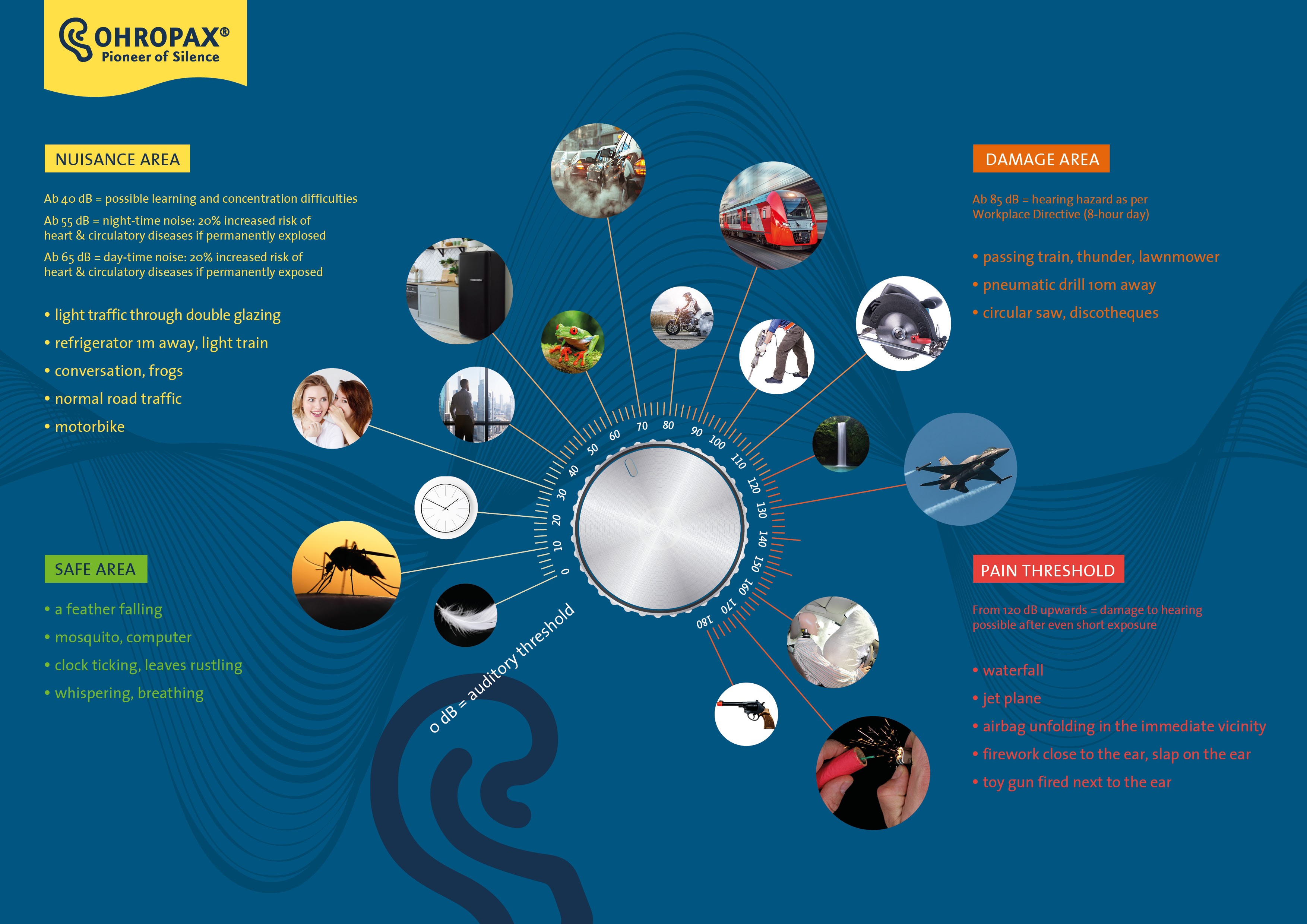
The protective effect of hearing protection products is indicated in dB (decibels). As this is a logarithmic quantity, even small differences in numerical values indicate significant differences in the physical effects. For example, an increase of 10 dB in the noise pressure level is perceived as being twice as loud.
The SNR (single number rating) value of a product indicates the averaged insulation value for the frequency range relevant to the human ear (125 to 8,000 Hz).
An SNR value of 35 dB, for example, lowers noise exposure of 100 dB (e.g. in a typical nightclub) to 65 dB. This is below the threshold value of 85 dB where hearing damage occurs. This type of hearing protection product would also provide adequate protection in the case of longer exposure times.
The threshold value of 85 dB is based on occupational health and safety and refers to a 40-hour week. If the noise level is higher than this value, hearing protection must be worn at the workplace. However, hearing protection must be provided in the case of noise levels of 80 dB or higher and should be used where possible.
The duration of exposure always has a significant influence on the potential risk. The higher the noise exposure, the shorter the exposure time: 40 hours of exposure to a noise level of 85 dB is equivalent to two hours at 98 dB or just ten minutes(!) at 109 dB.
The HML values indicate the level of the respective sound insulation in three combined frequency ranges: The HML values indicate the level of the respective sound insulation in three combined frequency ranges: H (high): between 2,000 and 8,000 HzM (medium): between 1,000 and 2,000 HzL (low): between 125 and 1,000 HzThe HML values can be used to carry out calculations when more detailed information is available regarding the frequency composition of a noise source, e.g. according to device documentation.